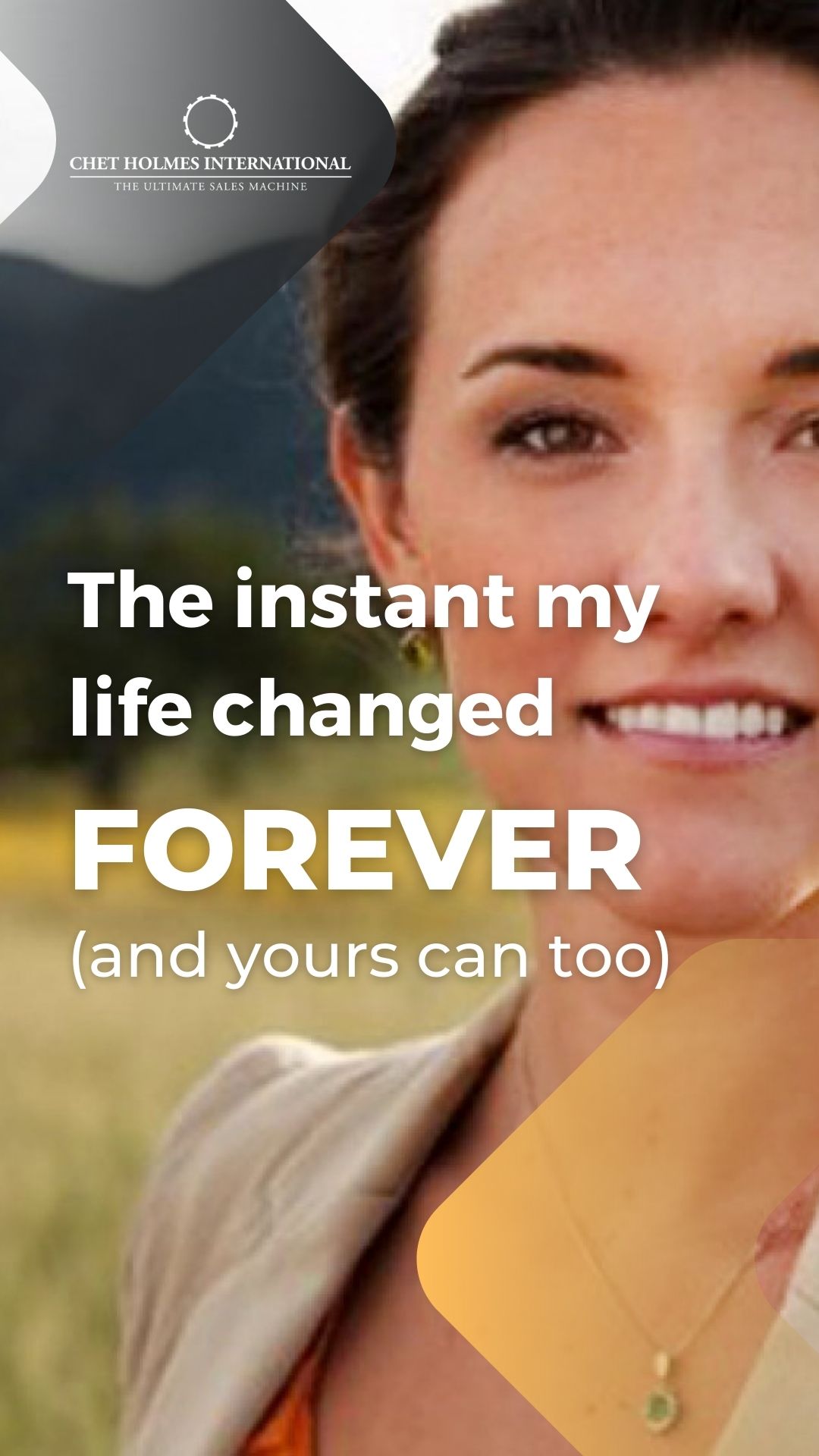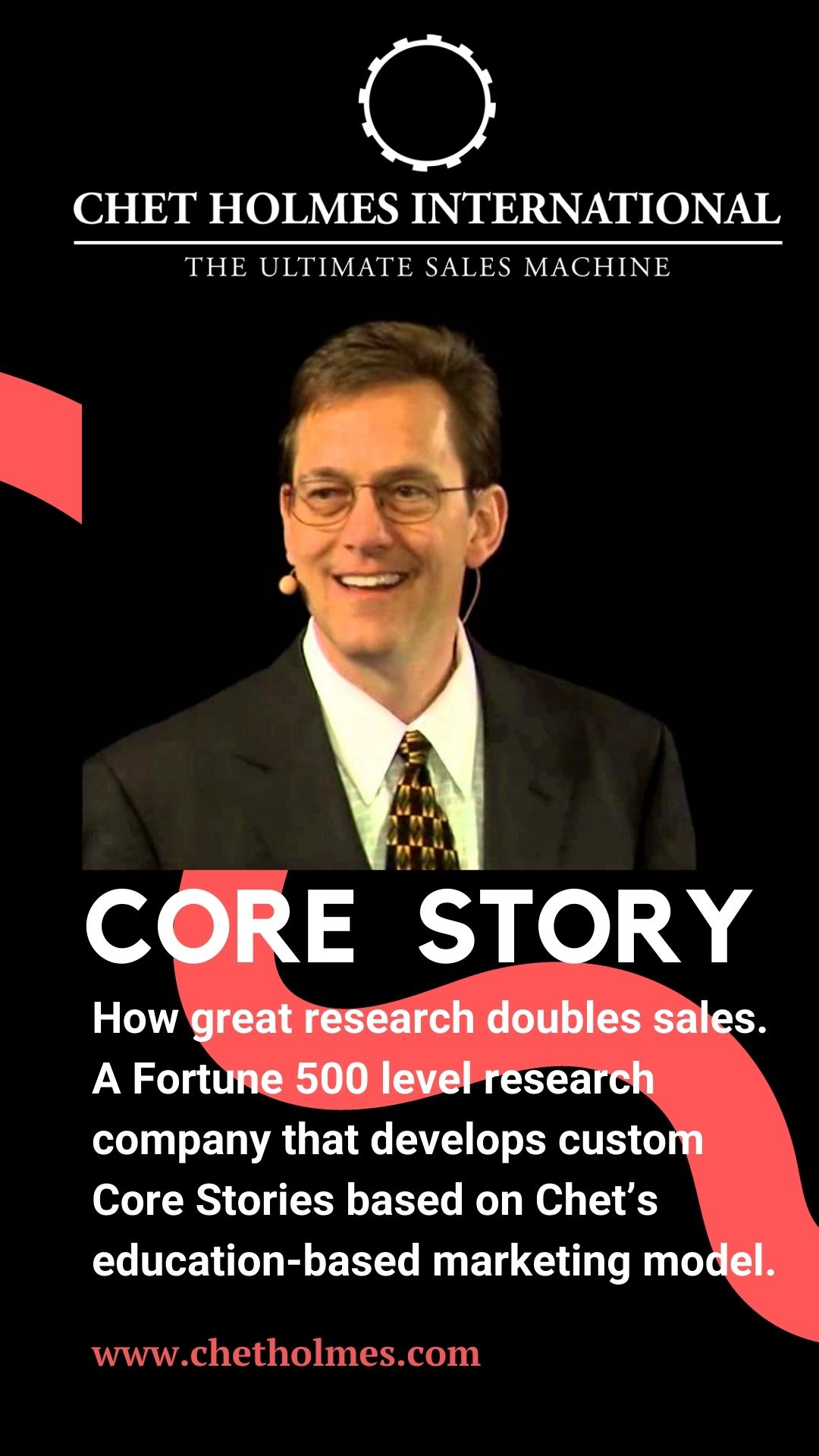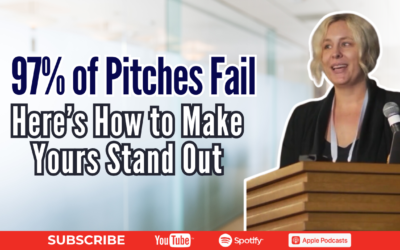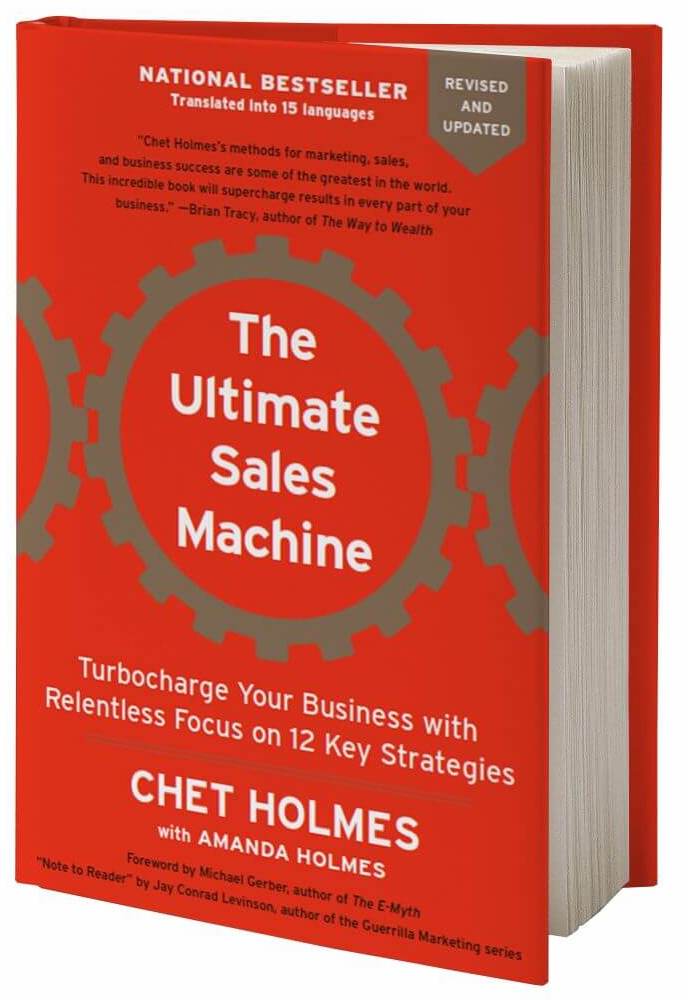Tom Douglas – CEO of JMARK
- Ranked Top 5% of Managed IT Service Companies in the US
- Voted one of the Best Places to Work in Missouri
Description:
In this interview, we start with some alarming information you probably didn’t know about the recent tripling of cyber attacks in the last 11 months, what you need to know about the threat, as well as what to do to protect your company from a potential average breach of $4 million dollars for medium sized-businesses, $50-100k for small businesses.
In the second half of the interview, we go into the secret sauce of JMARK and why they’ve been voted top 100 in the world with 98% of their clients voting 5 out of 5 ratings. They are top of their industry because they put people first, then technology second. Hear Tom’s views on people puzzles and how to handle difficult personnel issues. Simple tactics they use to drive a positive company culture that breeds success.
TAKING ACTION:
- Want to know what’s keeping you from doubling your sales in the next 12 months? Take our quick QUIZ to get answers: Howtodoublesales.com
- If you’d like to have a profound breakthrough in your business, schedule your breakthrough call with a LIVE expert here: Chetholmes.com/Breakthrough
- Claim your FREE chapter 4 from the top 10 most recommended marketing and sales books of all time! Visit: Ultimatesalesmachine.com to find out how you Create 9X More Impact from every move you’re already making to win clients!
TRANSCRIPT:
[00:00] Amanda Holmes: Hello, Amanda Holmes here, CEO of Chet Holmes International. And I am so excited to have with me Tom Douglas, who is the CEO of JMARK. I’ve been on their board for the last two years and I just love it, everything they do.
They are one of the top 5% of managed IT services companies in the US and Top 100 in the world. And he really knows what he’s talking about obviously. They have 21.4 million different batches that you do.
[00:29] Tom Douglas: Scripts that we run against the environments to make sure that they’re healthy. Yeah it’s just nonstop, you can’t rely on technology to run on its own anymore. It just doesn’t work. So you have to bring automation to the table and make it, make it work right. Make it sing.
[00:44] Amanda Holmes: And then yes, make it sing. And then yesterday you just won one of the best workplaces in Missouri, which I love, which speaks to your people first, technology second. I wanted to bring Tom in because the need for business owners to know about cybersecurity today. Why has that become such a big, important thing for business owners to know?
[01:06] Tom Douglas: It’s crazy, the number of attacks that are going on every single day, the numbers spiked to 3.9 billion attacks that are going on an annual basis.
It tripled in the last year and the reason is because it’s very profitable. The bad guys, the hackers that are going after the United States primarily. It’s a money machine. And so a lot of people don’t know this is a multi-billion dollar industry. The bad guys are making more money in that industry than the GDP of most nations.
It is unbelievable how much money transacts on a daily basis, just around cybersecurity. So when they get information, they steal data, they’re trading it online. Obviously ransomware is the biggest threat this year.
And what most small businesses, most medium-sized and large businesses don’t even know is that the bad guys, the hackers, they sit overseas, they have well-run companies they’re recruited. The hackers are actually paid a commission. They have HR departments. They sit in a cubicle every single day. It’s a business and it’s a very profitable business. And the more money that goes into it, the more they reinvest, the more hackers they hire, the more developers and coders and they recruit just like we do for the best talent in the world.
[02:23] Amanda Holmes: What does it do for a business if they were hacked or if they have signs of problems for cybersecurity?
[02:28] Tom Douglas: Oh, it’s unbelievable. We’ve been pulled into horrible situations. The average recovery time for a company that doesn’t have a cybersecurity strategy is about 40 days. So the first week or so is almost a hundred percent of all their expenses have to continue to be paid and almost no revenue is brought in.
And so, you’re burning both ends of the candle. You’re spending all of your money and you’re not producing new revenue as an organization for the first seven days. And then after that, you start to see it come back together but it’s almost 40 days worth of impact to the organization. And that’s if you just have a backup.
One of the challenging things is the bad guys often times are getting in now and they’re deleting all your backups before they deploy the ransom. And so sometimes, you’re starting from scratch. Think about how your business would be if you lost your entire database.
[03:17] Amanda Holmes: So they’re stealing the database and then they’re selling that data. That’s why they are doing it.
[03:22] Tom Douglas: Well, and they’re holding you for ransom. So they encrypt all the data. And they say, “Okay Amanda, I’ve got your data encrypted and I have a copy of it, and I’m not going to give it back unless you give me a million dollars and you’ve got 48 hours or I’m deleting it all.”
[03:37] Amanda Holmes: And do you negotiate with them?
[03:40] Tom Douglas: We do not. But there are companies in the world that specialize in that negotiation.
[03:45] Amanda Holmes: Really?
[03:46] Tom Douglas: Yes, you have to have a nailed up cybersecurity insurance policy. You have to have a cyber security strategy and a good insurance company will bring in the experts to help with remediation negotiation. There are lawyers involved.
It’s ery very expensive. The average breach costs somewhere around $4 million for a medium-sized business,
[04:06] Amanda Holmes: $4 million, and that’s loss of productivity with their staff, paying their staff even though they can’t work.
[04:14] Tom Douglas: Loss of revenue, the recovery time that it takes to get it done. Oftentimes, you have to bring in specialists to recover the environment.
In a small business, you know, a hundred employees or less, the average cost of legal bills is somewhere between 50,000 and a hundred thousand dollars. The ransom could be a million dollars and then you have to, re-install almost every computer, almost every server in the environment, you know, big costs associated with that.
And it doesn’t stop at 40 days. It’s not like you’re at a hundred percent. Your database is damaged. Your brand is damaged. Your reputation is damaged. I mean, it goes on and on because you have to notify anybody whose information was stolen that that information is up and available on the dark web. So it just never stops.
[04:56] Amanda Holmes: So you had shared with me that there are three main reasons why companies get breached.
Can you share with me what they are?
[05:03] Tom Douglas: Yeah, for sure. One is the “head in the sand” syndrome. They just, they like, they’re not after me. I’m a small business, I’m a medium business or I’m too big and they’re not going to be able to get through, you know, our environment. So it’s that head in the sand. They just don’t want to deal with it. They’re kind of ignoring it. So that’s number one.
Number two is they trust the wrong person or the wrong company. And a lot of organizations, they have an IT guy, we lovingly described the IT guys Johnny Ponytail. And in that environment, they’ve known him. He’s probably a very good person, you know, in one form or another he or she, and, but they’re trusting that individual or even a small team of people to take care of all of their IT resources and they just don’t have the horsepower to get it done. It’s so complicated. You have to have subject matter experts in every area of the business for you to be able to protect it properly and to run it properly.
The last is money. It’s expensive. The cost of IT is going up. I hate it. I tell our clients that I don’t want them to have to spend more money on cybersecurity. I don’t want that. I would rather them invest in marketing and sales and to grow their business.
But the reality of it is we have to. The threat is real and ignoring it or avoiding it from a budget perspective is just going to make it worse. It’s going to cost a lot more down the road. I kind of describe it like when airbags got in cars, When it became a requirement, the cost of the car went up and we all adjusted, but it was a good thing because it was safer.
Same with cybersecurity. It’s safer when we put these tools and technologies in place and it’s protecting us more, but it costs more.
[06:44] Amanda Holmes: Can you share a little bit about what people should look for then, or what’s an actionable item that they can do to protect themselves?
[06:53] Tom Douglas: Trust but verify. So you can have the best team. We encourage our clients, anybody, get a third-party assessment done.
More brains in that environment, the better. So once a year, once every other year at a minimum, but ideally once a year, you’re bringing in, you’re doing an assessment of your environment just to make sure. I mean, we run really nailed-up companies. We can always get better. Every IT environment can get better. So get that third-party validation.
In addition to that, I would say, look for sloppy IT. That’s a tell-tale sign. It’s one of my pet peeves. But if you walk into a server room and it looks like a spaghetti mess, chances are, they don’t have time to pay attention to the details. What else are they not paying attention to in your environment that could leave you exposed?
So those are two simple things that you can do. And even though bringing in a third party isn’t cheap, it’s not horribly expensive either, and it’s definitely worth the investment.
[07:48] Amanda Holmes: Right. You want somebody that’s an expert. I’ve definitely, I’m a great case study of all the things that can go wrong. If you’re in the wrong IT, it’s very painful.
But then also, and I love how you talk on this the efficiency and effectiveness, the velocity of having more just technology amidst your staff, right? To make them more productive. Can you share an example of that?
[08:11] Tom Douglas: Well, you know, a lot of businesses take a lot of time to put the right software in place.
They invest, they do the research and they deployed the software and they stop. That’s just the beginning. Training needs to go on – iterations, improvements, constant evaluation of what’s going on. So just like you have to adapt in marketing to all the new tactics, you’re constantly adapting in IT.
And the way that you use your systems to run your business more efficiently. And so identifying a subject matter expert inside your organization, who’s going to own the systems and help your whole staff use it the most effectively, and then having a partner that can run the IT infrastructure so that the hardware, the software, the infrastructure underneath, because we want to make sure that it’s stable.
Like when you get up in the morning and you get in the car, you never expect that you’re going to put your key in and push the button and it’s just not going to start like you expected to start every day. Yeah. And that’s the way it should be. It should just run all the time. And that speeds up the business because what we don’t want is people frustrated, you know, when you hire good people, the best salespeople in the world, do you know how hard it is to get them hired? It’s so tough.
I mean, your course is teach people on hiring the best salespeople and you get them in, and then they have really bad technology. And then what? They’re going to leave because they’re driven by achievement. And if their technology is holding them back from achievement, then they’re going to move on.
And so you have to constantly make those investments, make those improvements, tweak, and improve the efficiencies of the environment. And that speeds the whole business up.
[09:46] Amanda Holmes: No wonder 98% of your clientele have voted you five out of five, huh?
[09:51] Tom Douglas: Well, we take a lot of pride in it. We really love what we do,
[09:55] Amanda Holmes: And I love how you all consistently put in that loop of getting feedback from clients. I think that that’s brilliant. And how much you’ve automated so much of your business. I have to say from knowing your business, you operate more efficiently than the majority of Fortune 500 clients I have. I look at them and go, man, if only they could learn from JMARK.
[10:15] Tom Douglas: Thank you. We appreciate it.
We’re fortunate. We’ve got a wonderful team that knows that and we have to automate, I mean, the cost of IT, the cost of management is getting more expensive. So we have to rely on technology to solve problems.
[10:28] Amanda Holmes: Another thing that I want to touch on is because your tagline is “People first, technology second”, right? So there’s automation, but then there’s also understanding your people.
Can you share with everybody about the people puzzles?
[10:39] Tom Douglas: Yes, it’s one of my favorite things. I believe that our job is as leaders – so I’ve got this personal mission that, that small businesses can change the world in a better place because we can help people to break through these false glass ceilings that we all have.
You’ve been through it. You were put under a glass ceiling at one point and you had to shatter it to be the CEO and to do all the great things that you’ve done. Everybody has those, whether they’re self-imposed or because of their family or whatever it is. And so I think small businesses are the place that we can break through these glass ceilings and help people to evolve.
But in the midst of it, we also have to recognize that different people have different talents. It’s a little bit like playing Tetris. And just because you hire someone in to do one thing in the organization, that doesn’t mean that’s always where they go. And so having the courageous conversations, working through those challenges, which I call people puzzles, are helping us as business leaders and them as part of the team to work through and navigate and become the best version of themselves.
And when you get someone in that seat that they love and they’re passionate about, and you believe in them that they can do more, then great things happen.
[11:55] Amanda Holmes: I see it. No wonder you’ve been voted best places to work, right? Can you share an experience where you’ve had that problem of a people puzzle and how you were able to solve it?
[12:04] Tom Douglas: We’ve solved so many people puzzles. To run a growing business, you just have to do it. But I would say one of our craziest stories is one of our managers. We’re not perfect. One of our managers made a mistake. He fired somebody. He had enough. They thought that they had notified him, had made him aware of the challenges and the gaps that he needed to step into in order to solve the problems. He had gone through the traditional HR protocols and documented it and all those things let him go.
Well, the individual was somebody that had worked for the company for some time, reached out to me and said, “Tom, I don’t understand. Like, this isn’t clear.” Well, come to find out we hadn’t done everything right. We documented, but we didn’t have the right kind of courageous conversation for that individual to understand.
The reality was that he is an individual who had kind of a sign on his chest that’s like, I’m hard to do business with internally. Like he was grumpy. He was frustrated. Like he got mad when people ask a lot of questions, he was like, no, no, no, no, no, no. Our culture is you have to have a sign that says I’m open for business. I’m here to help. I’m here to serve. And when you have that mentality, then you can do it.
So when we got through all of that and we had that kind of tough moment, I stood in front of our company and said, look, we made a mistake. He’s joining the company, staying in the company. He stood in front of the company and said, I am here to serve. I’m open for business. And I’m happy to be a part of the company we came together and he’s a rockstar part of our team today.
[13:43] Amanda Holmes: Wow.
[13:43] And there was another thing that I loved that when you shared this before, you said that you come to each person with honor.
[13:50] Tom Douglas: You start with honor first. So we all have people problems. It is a part of growing any kind of business. But if we always start from a place of honor, serving them first, helping them to be the best version of themselves which may mean they need to leave the organization. And that’s okay too.
But so if we start from a place of honor, how are we serving them? How are we making their life better than starting from that place rather than from a place of criticality helps everybody to be in a better place and a better mentality to solve the problem together rather than the animosity. Sometimes it happens between boss and subordinate.
[14:28] Amanda Holmes: And I was really impressed of what you did during the pandemic as well.
I mean, the way that you handled your people and took care of them and made sure that you didn’t get any layoffs, right? You just re-situated and it was hard and it was difficult, but you found a place for everyone.
[14:44] Tom Douglas: Yeah. A hundred percent. Yeah, we did. We had to shift. So a big part of our organization supports hospitality, which was obviously devastated during the downturn.
And so we took that part of the team and we had some growth in some other areas of the business. And so we were shifting the system. But one of the first things that we did that I think all business leaders have to do is communicate like, look, the company is safe, we’re going to make it. We’re not letting anybody go. We’re just going to shift.
And so it was a really strong part of our strategy to make sure that people could breathe because people care about their families and they get nervous. And that turns into all kinds of things. So we wanted to take that off the table from the very beginning, and I think it made a big difference for hooks.
[15:27] Amanda Holmes: And there’s one more tactical thing. I love your Friday rallies. Can you share with everybody? Because I think they’re still having a hard time with getting people involved and getting people excited. So what do you do with that?
[15:39] Tom Douglas: So we try to do it every Friday. It doesn’t always come together, but every Friday around three o’clock, we try to get the company together and just celebrate the wins for the week, communicate as an organization about what’s going on.
There’s so much negative noise in the world today that I think it’s really important for our team to recognize that we have a bunch of rockstars in our organization and let’s celebrate them. Let’s talk about the great things and hey, if we’ve got challenges, let’s talk about those too and let’s get it on the table and work together as a company to solve them as an organization, instead of like push them off in the broom closet and hope that nobody sees them. We want to call it out and put it in front and center.
But most importantly, it’s to celebrate people. It’s the great work that people do. It’s calling people out.
And so it’s kind of an open mic session where one part of the team can call out somebody else on the team and just celebrate them and give them a virtual high five. And because we’ve got people all over the country, we just do it over Zoom. Some of us are in the office and that’s okay too. We can celebrate together and we’ll have a cold beer and celebrate what everybody’s personal choice of a drink is.
And we, you know, it’s cheers to them and we celebrate.
[16:43] Amanda Holmes: What’s your celebration? What do you do?
[16:45] Tom Douglas: Two clap, boom. Yeah. So, I’m not the owner of that. We stole it. I’m always really transparent about that, but we celebrate it all together and I say two claps and then the whole company just two claps and then boom! We love it.
[17:06] Amanda Holmes: Yeah. Well, I also want to acknowledge and thank you so much for being such a wonderful component of Ultimate Sales Machine. And, can you share a little bit about where that’s been beneficial for you and your company?
[17:18] Tom Douglas: Well, I think there’s a couple of different areas. First, well, there’s so many. The course, their story – I love the piece behind that. I love the ability or the focus on giving and educating. It’s so important.
But I think the Dream 100 for us. So we have wanted to implement the Dream 100 and struggled with it and had challenges. We know that our target client or prospect is very unique.
And so it’s really hard for us to figure out who that is and how we needed to navigate it, to narrow it down and not kind of go through the marketing spray and pray method and get rid of that and dive into this. And so your course that you put together has really helped us to make a big difference.
And so we were very grateful for that.
[18:15] Amanda Holmes: That’s wonderful. And I think you would also just having the outline of each step of that process.
[18:21] Tom Douglas: That’s exactly what it is. It’s just, it’s hard. I mean the idea of it – it sounds simple but not easy, right? And so how do you start, and then how do you get all the way through it? And you take a database of hundreds, thousands, millions of people in some circumstances and narrow it down to a very strategic focus. And that was, that was daunting and overwhelming. And so the course, yes, getting really focused on it and the examples and how personal did it needs to be in developing that strategy is helping us to do that. And so we’re launching that right around the corner. We’re super excited about it.
[19:00] Amanda Holmes: Thank you so much. So this has been so informative. I’m sure everybody that’s listened to knows a little bit more about IT, learned a little bit about how to have that people-first mentality and how to solve those people puzzles. I think even the name piece of people puzzle makes it feel like it’s a fun game as opposed to like a dread.
[19:19] Tom Douglas: Yes. That daunting challenge that we sometimes feel isn’t – oftentimes, it’s not as bad when we just get together and we start with honor.
[19:25] Amanda Holmes: And how do people find your organization?
[19:30] Tom Douglas: The easiest way is online. It’s Jmark.com.
[19:33] Amanda Holmes: Perfect. Thank you so much, Tom.
[19:35] Tom Douglas: Hey, thanks for letting me be a part of it. Appreciate it.





 Get your pre-sale copy of the new edition of The Ultimate Sales Machine! (With special limited time bonuses)
Get your pre-sale copy of the new edition of The Ultimate Sales Machine! (With special limited time bonuses)
0 Comments